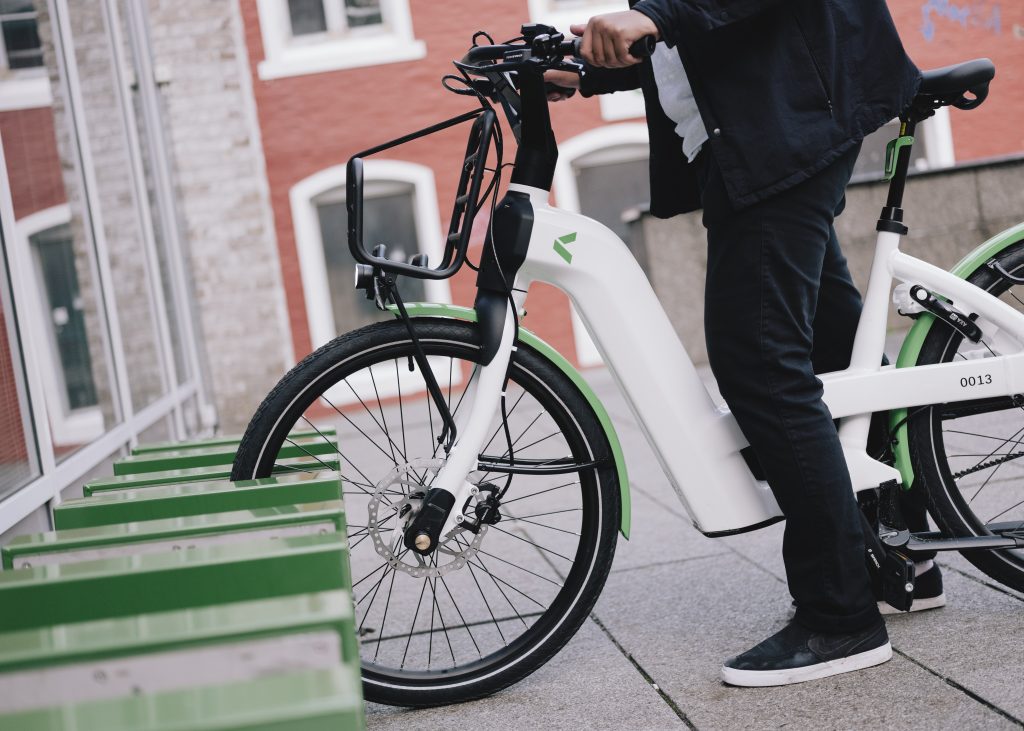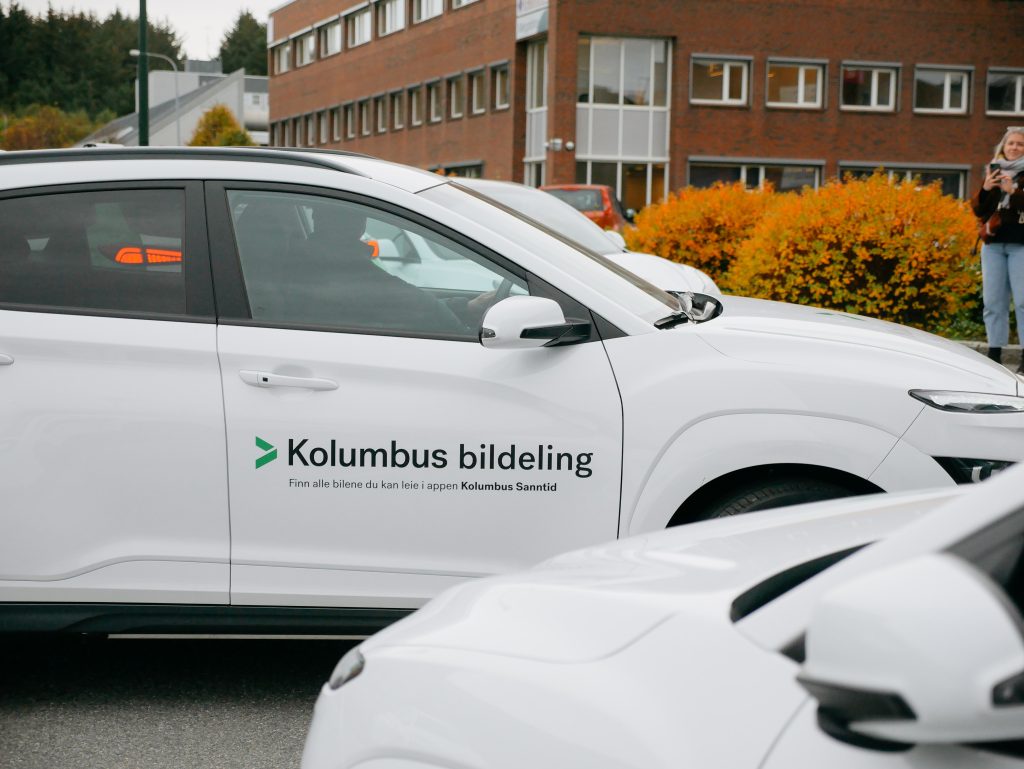On 13 June 2017, the county of Rogaland in Norway took the decision to transition the public transport company Kolumbus into a mobility company.
Since then, its agility and attitude has turned numerous pilots into operational successes.
Racking up over 110,000 daily trips, Kolumbus now operates 450 buses, 10 speedboats, 3 ferries, car sharing, an e-bike share and is also testing a self-driving bus.
Zag: Why have politicians voted for Kolumbus to be a mobility company rather than a public transport authority?
Edith (CEO): “Our leaders recognise that traditional thinking – relying solely on buses, trains, and regular transportation – isn’t enough to create vibrant urban communities or achieve zero-growth goals. You need a combination of offerings to reduce car use.”
| Zero-growth goal in Norway Norway aims to reduce greenhouse gas emissions, traffic congestion, air pollution, and noise through efficient land use and by shifting the growth in personal transportation to public transport, cycling, and walking. With a large demographic moving to urban areas, the zero-growth goal ambition is that the resulting traffic increase from this group will be taken with public transport, bicycling and walking modes. |
Zag: What’s your strategy for a place like Stavanger [city in southwestern Norway] with an urban sprawl that is hard to serve with just traditional public transport?
Edith (CEO): “We keep expanding the scope for Kolumbus as a mobility company. We look for offerings that fill the gap of what the market is yet not providing to replace car rides. As long as it contributes to the zero-growth goal, we are open to working on anything internally.”
Zag: Is that why you’ve established your own electric bike-sharing system? I haven’t heard of many public transport companies doing that.
Randi: “We started an electric bike sharing system back in 2014 and realised it’s connected to public transport. We saw electric bike sharing as part of that journey early on, but the market couldn’t deliver the bike we wanted in terms of sustainability, user-friendliness and reliability. Especially for our electric bike share, we needed year-round operation. So, we set it up ourselves.”

Zag: There’s a long tradition of subsidising bike share. Now they’re competing with e-scooters that receive no subsidies. What’s the rationale behind that?
Randi: “Our entire business model is built on this public basic principle. The electric bike share system in our region involves ticket revenue, but also contributions from participating businesses and the municipality.”
Edith (CEO): “There were also no electric bike shares in 2014, and e-scooters were hardly known. Now things have changed, and we are monitoring whether our business model remains appropriate.”
Randi: “We recently conducted a Request for Information to see what the market can deliver. We are exploring all solutions that align with our values of sustainability and the zero-growth goal, especially if there is something better in terms of the values we want to deliver.”
Espen: “The RFI focuses on electric bike share, but is also crucial for e-scooters. Instead of publicly funding 5,000 e-bikes, maybe we fund 2,500 e-bikes in less lucrative locations that connect mobility. Then e-scooters can be where they should be.”
Zag: It sounds like you’re not worried about putting the electric bikes where they generate the most trips.
Randi: “We focus on different goals than other electric bike share operators. It’s not crucial for us to get the most trips. We want the right trips, the ones that replace car rides. We use bike sharing as a supplement towards that goal.”
Espen: “Circling back to your earlier question, we started with electric bikes and a service for local businesses called “home-work-home.” The term “mobility” didn’t fit our focus on commuting, but it got politicians and people supporting the concept and elevated the issue in Rogaland. Kolumbus became a mobility actor much faster than others because of it.
Figure 1: the HomeWorkHome initiative
| HomeWorkHome is a collaborative mobility initiative in Nord-Jæren aimed at reducing personal car traffic in urban areas. The initiative is administered by Kolumbus in partnership with local authorities, and cycle businesses. Their stated goal is to decrease car use among employees, aligning with the government’s zero-growth objective for personal car transport in metropolitan areas. |
“We were able to anchor the business on the “inside” which allowed us to address some of the issues we were facing and to think more broadly. We still focus on urban growth data, and geographic and economic constraints in Nord-Jæren, but we also see the outlines of this becoming contiguous throughout the county.”
Zag: Can you tell me about your relationship with businesses in Rogaland?
Edith (CEO): “We’ve seen the potential for much more dialogue with businesses that don’t fit neatly into the “home-work-home” box. There’s an increasing need to be involved early on with both large companies and municipalities, like with establishing new residential areas.”
Espen: “‘Home-work-home’ also became a big silo for the corporate market. If you didn’t want to be a home-work-home company, I couldn’t talk to you, but if you wanted to talk to Randi about electric bikes, she had to deal with a company, and then you had to deal with two or three people internally with us. We’ve professionalised and structured that.”
Edith (CEO): “Our region has the lowest public transport share among cities, a strong economy in Stavanger, and kilometres of parking spaces. It contributes well to the zero-growth goal if you can help a large company to think differently.”
Zag: What has the reception been on the business side?
Espen: “The feedback to “home-work-home” has always been positive. We provide proven measures that in some contexts are part of the “carrot” for companies, municipalities, or business areas that have green goals.”
Randi: “At one point, there were 67 job ads on Finn.no that mentioned “home-work-home” as a benefit. After spending so many years building our brand, that gives us a significant position to adjust and ask something back from the companies that work with us.”
Espen: “In the long run, we see this positioning happening more, for example, as a mobile subscriptions companies can buy, or through public transport or mobility solutions.”
Edith (CEO): “There have been discounted public transport tickets for home-work-home employees. It was politically controlled and much more attractive when the price gap was bigger. As the differences become smaller, we try to follow up with other benefits.”
Espen: “If we include municipalities in our business commitment, many in Rogaland want us to facilitate subsidies for bicycles, e-bikes, for residents in smaller municipalities that often feel disconnected, especially larger, greener initiatives, and through urban growth, where there’s a big city focus.”
Randi: “Municipality budgets are limited, but small things like leasing a bike or changing to studded tires don’t cost much, but are highly visible and a good measure for residents.”
Zag: You also subsidise car-sharing. Why is that?
Espen: “Research reports from Bergen, Bremen, Belgium, all show car-sharing contributes to the zero-growth goal. We saw an opportunity to lift the market to maturity, similar to our approach with electric bike share. When it works on its own, we can have a less active role in it.”
| Key facts from study conducted by Institute of Transport Economics in Norway, on behalf of Bergen Municipality 1 in 6 people shift to walking, cycling, and public transport due to carsharing. Half of car sharers eliminate a personal car; 1 in 4 postpone or avoid purchasing a new one. One shared car replaces 10-15 private cars in Bergen. |
Edith (CEO): “It wouldn’t have been natural for Kolumbus to sponsor car-sharing in a mature market. Stavanger hasn’t been attractive for car-sharing operators to establish themselves. We hope to teach people in Rogaland that it’s a way to manage without a private car.”

Zag: These subsidies have mostly been through parking spaces so far. Is that correct?
Espen: “Kolumbus doesn’t own any land, so that has been through the municipality. If we want private car-sharing operators, you have to make the region attractive, for example, by not charging parking costs for the first two or three years. We’re also exploring revenue guarantees, operational guarantees, and expanding our role as we’ve done with bike sharing.”
Zag: I’ve heard that Kolumbus also has a self-driving bus pilot.
Edith (CEO): “Yes, it’s an exciting project with strong partners. A year and a half ago, it was the world’s first large bus in service. It’s been used in downtown Stavanger since May 2022. That bus is still a world leader and an important part of the focus on large buses. It’s in an exciting phase where it will be routed and will drive at 40 km/h through a tunnel with passengers. We think our role in self-driving is that we must be involved and act as a test lab.
Espen: “The technology has completely different constraints in a tunnel. You don’t get open landscapes, so it will be interesting to see if there are other things the bus needs to learn.”
Zag: It seems like this pilot would take a lot of the development costs and make it cheaper for other PTAs to adopt.
Edith (CEO): “It’s important to emphasise that we do not use operating funds for things like the self-driving bus. The pilot is funded by external financing, not the county council’s basic funding. We do share everything that we have done with all other municipalities.”
Zag: It seems like there is a big focus on investing in momentum. What advice would you give to those with smaller budgets who want to try a new project for maximum impact?
Edith (CEO): “Leasing has led to 6,000 bikes on the road in our region alone and costs businesses nothing. It costs us nothing other than having to develop the competition. It’s an inexpensive measure that leads to a lot of bikes on the road.”
